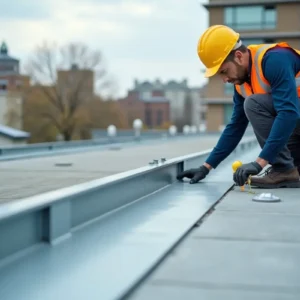Cold planing, another name for asphalt milling, is a standard method contractors use to remove damaged pavement before adding fresh asphalt layers. It is a practical and cost-effective alternative to complete demolition and repaving. Milling a road or parking lot involves grinding the pavement from just enough thickness to level and smooth to complete depth removal.
Contents
Leaving the Sub-Base Intact
When asphalt resurfaces on a road, driveway or parking lot, it is necessary to leave the sub-base intact. It helps the contractor correctly lay a new asphalt layer without damaging the existing curbs, drainage, and other structures.
Heaving or cracking can occur when a road or parking lot has been paved, and the sub-base is no longer strong enough to support the pavement. It is when water begins to seep through cracks and potholes, causing severe structural damage to the foundation.
Luckily, road milling can address these issues. It is a cost-effective and environmentally friendly solution to repair faulty surface layers of asphalt pavement.
The process of asphalt milling involves using a large piece of construction equipment called a cold planer to remove the top layer of pavement. This machine slowly drives down the surface, trailing a drumhead covered in spikes that dig into the asphalt, ripping and capturing it. The milled material is then loaded onto a series of conveyor belts, transporting it to waiting trucks. The reclaimed asphalt is mixed with fresh paving material poured over the sub-base.
Removing the Top Layer of Asphalt
Asphalt milling is a famous pavement resurfacing method that involves removing the top layer of asphalt, allowing crews to access the underlying layers. It makes it possible to create targeted repairs, such as fixing potholes or cracks. Unlike other methods, which involve digging up and replacing an entire section of asphalt, milling leaves the underlying base intact. It creates a solid, stable bond between the fresh asphalt and the sub-base. During milling, special equipment removes 1 to 3 inches of the top layer of asphalt from the pavement surface. The removed aggregate is then screened to remove impurities, leaving the surface ready for a new paving layer. The resulting material is then transported to a recycling plant and converted into new aggregate. It can then be used for repaving projects or in hot mix asphalt. This reclaimed aggregate is also better for the environment than regular gravel.
Creating a Smooth Surface
During asphalt milling, the old asphalt is ground to a smooth surface, making it easier to lay a new layer. It also means that curbs and drainage are left intact, saving time and money when applying a new road or driveway. Another benefit of asphalt milling is preventing pavement damage, such as bleeding and raveling. These occur when the aggregate and binder haven’t been mixed properly, which can lead to cracking and crumbling over time. It can also help to reduce air pollution as it doesn’t use burning or heating materials like other paving methods. In addition, it creates a safer road surface for vehicles and pedestrians alike. To start a milling project, you must clear and grade the area. It includes distributing crushed rock over the base soil to facilitate drainage. After that, you’ll need to compact the soil carefully using a drum roller compactor to ensure a solid foundation.
Recycling the Old Asphalt
Old asphalt becomes the base when a road or parking lot is repaved. Recycling this material for reuse is a cost-effective, environmentally friendly method.
When asphalt is recycled, it saves on energy and material costs for paving contractors. Additionally, it reduces transportation expenses since the material doesn’t have to be mined or transported from its source. It also improves the quality of the paving material. It makes it more resistant to cracking and rutting.
The old asphalt is crushed and filtered during recycling to remove any binders or aggregates. Afterward, the material is mixed to create a new product.
This process reduces the amount of oil needed to produce and transport asphalt and can help reduce foreign oil dependence. Additionally, it allows taxpayers to save money and preserve natural resources.




